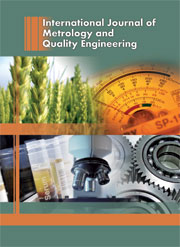No CrossRef data available.
Article contents
Average outgoing quality of calibration Labfacilities
Published online by Cambridge University Press: 06 March 2014
Abstract
Quality assurance is an integrated part of any calibration facility. The calibrationfacility as well as its customers are interested in the facility production outgoingquality. In most calibration labs the inspection of calibrated items is performedaccording to a suitable sampling inspection policy. Some of these policies are very goodin assuring the quality of the calibration services they offer, but do not provide a clearassessment of the outgoing quality of the entire production of the facility. This paperhas developed two methods of calculating the average outgoing quality (AOQ) of acalibration lab that uses a multistage sampling inspection policy. The policy structure ispresented first along with the exact procedure of how to perform it by the inspectors andthe methods to calculate the AOQ. The two methods differ from each another in the type ofdata required to calculate the AOQ. The first method requires the technicians’ production,the number of items subject to inspections and the number of failing items found. Thesecond method requires only the number of technicians at each level of the multistageinspection policy. The verifications of the performances of two methods are accomplishedby building a simulation model on an Excel worksheet. The model simulates the calibrationfacility with the right parameters, and then compares the two methods with the actual AOQ.The paper further discusses the advantages and disadvantages of each method in a broadercontext of quality assurance.
- Type
- Research Article
- Information
- International Journal of Metrology and Quality Engineering , Volume 4 , Issue 3 , 2013 , pp. 201 - 207
- Copyright
- © EDP Sciences 2014


